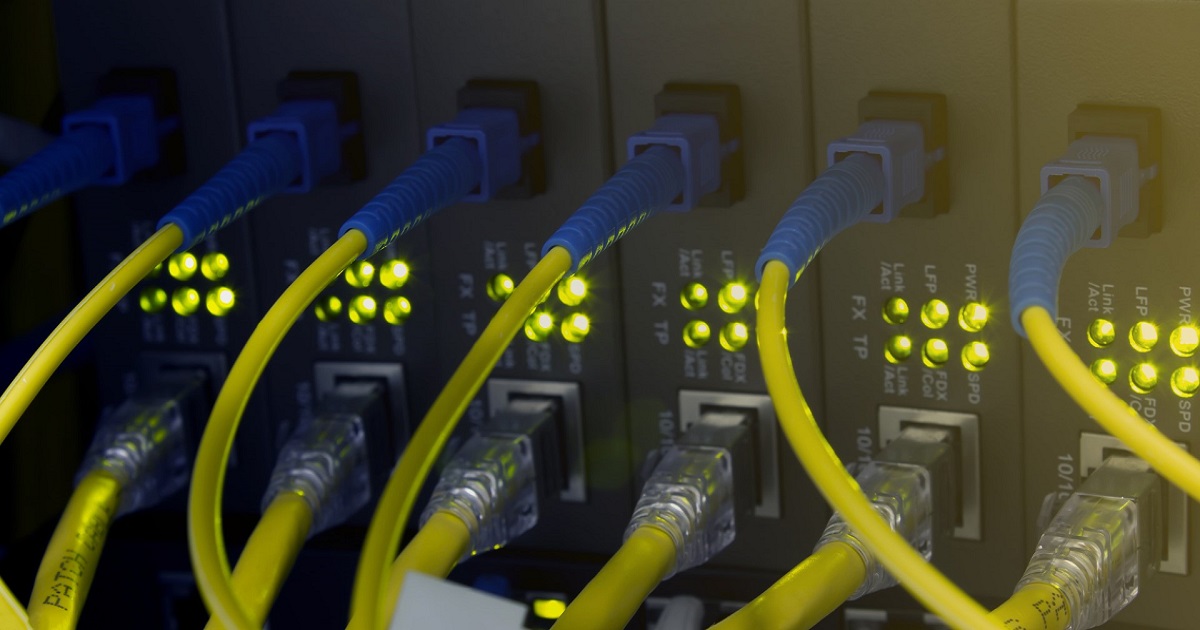
Hyper-Converged Infrastructure, Application Infrastructure
Article | July 19, 2023
We’re all hoping that 2022 will finally end the unprecedented challenges brought by the global pandemic and things will return to a new normalcy. For IT infrastructure and operations organizations, the rising trends that we are seeing today will likely continue, but there are still a few areas that will need special attention from IT leaders over the next 12 to 18 months.
In no particular order, they include:
The New Edge
Edge computing is now at the forefront. Two primary factors that make it business-critical are the increased prevalence of remote and hybrid workplace models where employees will continue working remotely, either from home or a branch office, resulting in an increased adoption of cloud-based businesses and communications services.
With the rising focus on remote and hybrid workplace cultures, Zoom, Microsoft Teams, and Google Meet have continued to expand their solutions and add new features. As people start moving back to office, they are likely to want the same experience they had from home. In a typical enterprise setup, branch office traffic is usually backhauled all the way to the data center. This architecture severely impacts the user experience, so enterprises will have to review their network architectures and come up with a roadmap to accommodate local egress between branch offices and headquarters. That’s where the edge can help, bringing it closer to the workforce.
This also brings an opportunity to optimize costs by migrating from some of the expensive multi-protocol label switching (MPLS) or private circuits to relatively low-cost direct internet circuits, which is being addressed by the new secure access service edge (SASE) architecture that is being offered by many established vendors.
I anticipate some components of SASE, specifically those related to software-defined wide area network (SD-WAN), local egress, and virtual private network (VPN), will drive a lot of conversation this year.
Holistic Cloud Strategy
Cloud adoption will continue to grow, and along with software as a service (SaaS), there will be renewed interest in infrastructure as a service (IaaS), albeit for specific workloads. For a medium-to-large-sized enterprise with a substantial development environment, it will still be cost-prohibitive to move everything to the cloud, so any cloud strategy would need to be holistic and forward-looking to maximize its business value.
Another pandemic-induced shift is from using virtual machines (VMs) as a consumption unit of compute to containers as a consumption unit of software. For on-premises or private cloud deployment architectures that require sustainable management, organizations will have to orchestrate containers and deploy efficient container security and management tools.
Automation
Now that cloud adoption, migration, and edge computing architectures are becoming more prevalent, the legacy methods of infrastructure provisioning and management will not be scalable.
By increasing infrastructure automation, enterprises can optimize costs and be more flexible and efficient—but only if they are successful at developing new skills. To achieve the goal of “infrastructure as a code” will require a shift in the perspective on infrastructure automation to one that focuses on developing and sustaining skills and roles that improve efficiency and agility across on-premises, cloud, and edge infrastructures. Defining the roles of designers and architects to support automation is essential to ensure that automation works as expected, avoids significant errors, and complements other technologies.
AIOps (Artificial Intelligence for IT Operations)
Alongside complementing automation trends, the implementation of AIOps to effectively automate IT operations processes such as event correlation, anomaly detection, and causality determination will also be important. AIOps will eliminate the data silos in IT by bringing all types of data under one roof so it can be used to execute machine learning (ML)-based methods to develop insights for responsive enhancements and corrections.
AIOps can also help with probable cause analytics by focusing on the most likely source of a problem. The concept of site reliability engineering (SRE) is being increasingly adopted by SaaS providers and will gain importance in enterprise IT environments due to the trends listed above. AIOps is a key component that will enable site reliability engineers (SREs) to respond more quickly—and even proactively—by resolving issues without manual intervention.
These focus areas are by no means an exhaustive list. There are a variety of trends that will be more prevalent in specific industry areas, but a common theme in the post-pandemic era is going to be superior delivery of IT services. That’s also at the heart of the Autonomous Digital Enterprise, a forward-focused business framework designed to help companies make technology investments for the future.
Read More

Hyper-Converged Infrastructure, Windows Systems and Network
Article | July 11, 2023
Discover the list of best hyperconverged infrastructure books and gain knowledge on the latest advancements in HCI and process design & explore areas for HCI improvements in the infrastructure domain.
This comprehensive guide presents a curated selection of top books to consider for adopting Hyper-Converged Infrastructure (HCI) in IT infrastructure. Organizations increasingly recognize HCI as a transformative solution that streamlines data center management, enhances scalability, and optimizes resource utilization. To navigate this technology effectively, businesses must equip themselves with the proper knowledge and insights from authoritative sources. The carefully compiled list of books featured here offers valuable information, providing IT professionals and decision-makers with a solid foundation to make informed choices and successfully implement HCI within their IT infrastructure.
1. Hyperconverged Infrastructure Data Centers: Demystifying HCI
Author: Sam Halabi
Hyperconverged Infrastructure Data Centers: Demystifying HCI is a highly informative and authoritative guide that provides a clear understanding of Hyperconverged Infrastructure technology. Written for technical professionals and IT managers, the book offers a vendor-neutral perspective on HCI, covering its use cases and comparing leading hyperconvergence solutions in the market. Halabi effectively explains HCI's benefits, combining storage, computing, and networking into a single system, offering simplicity, scalability, and flexibility without sacrificing control. The book explores computing, virtualization, and software-defined storage advancements, highlighting the improvements they bring to data center designs. The author guides readers through the HCI lifecycle, including evaluation, planning, implementation, and management. The book also delves into HCI applications such as DevOps, virtual desktops, and disaster recovery, presenting a new application deployment and management model.
2. Hyperconverged Infrastructure: A Complete Guide
Author: The Art of Service - Hyperconverged Infrastructure Publishing
This book is a valuable resource for individuals and organizations seeking to understand and leverage the potential of hyperconverged infrastructure. This guide takes a question-based approach, empowering readers to uncover challenges and develop effective solutions. The guide provides a comprehensive self-assessment tool covering seven core HCI maturity levels. With updated case-based questions, readers can diagnose their HCI projects, initiatives, organizations, and processes based on accepted diagnostic standards and practices. It helps readers identify areas where HCI improvements can be made and provides a clear picture of the attention those areas require, enabling them to lead their organizations effectively and address what truly matters. It empowers readers to make their HCI investments work better by guiding them through asking the right questions and seeking innovative perspectives.
3. Hyperconverged Infrastructure: Practical Tools for Self-Assessment
Author: Gerardus Blokdyk
The book is a valuable resource for individuals in diverse business roles seeking to optimize their Hyperconverged infrastructure investments. This comprehensive guide emphasizes the integration of HCI with other business initiatives and the monitoring of HCI activities' effectiveness. The guide emphasizes the use of HCI data and information to support organizational decision-making and foster innovation. One of the strengths of this guide lies in its focus on leveraging HCI data and information for organizational decision-making and innovation. The self-assessment tool helps identify areas for improvement, with case-based questions organized into seven core areas of process design. Nevertheless, this guide equips readers with the necessary tools and insights to maximize the value of HCI investments, align with business objectives, and foster a culture of continuous improvement and innovation.
4. Hyper-converged Infrastructure Standard Requirements
Author: Gerardus Blokdyk
This book offers individuals various business roles considering or exploring hyper-converged infrastructure implementation. This comprehensive guide emphasizes the importance of asking the right questions and understanding the challenges and hyperconvergence solutions related to HCI. It provides a set of organized case-based questions, enabling readers to diagnose their HCI projects and identify areas for improvement. The self-assessment tool helps organizations implement evidence-based best practices and integrate the latest advancements in HCI and process design. With the Hyper-Converged Infrastructure Scorecard, readers can gain a clear understanding of the areas that require attention and prioritize their efforts accordingly. The digital components accompanying the book provide additional resources to support organizations in their HCI journey.
5. The Gorilla Guide to Hyperconverged Infrastructure Implementation Strategies
Author: Scott D. Lowe
The Gorilla Guide to Hyperconverged Infrastructure Implementation Strategies is a book designed for strategic planners seeking innovative segmentation methods. This book offers individuals various business roles exploring HCI implementation. It starts with the architecture of hyper-converged architecture, followed by Exploring the Intersection of Software-Defined Networking and HCI. It delved into addressing the pain points and storage performance in HCI, with relevant use cases for practical examples. It covers data-center consolidation, test and development environments, and HCI economics, for its impact on the IT budget. It helps organizations implement evidence-based best practices and integrate the latest advancements in HCI and process design.
6. The 2022 Report on Hyper-Converged Infrastructure: World Market Segmentation by City
Author: Prof Philip M. Parker
The '2022 Report on Hyper-Converged Infrastructure: World Market Segmentation by City' is a book designed for global strategic planners seeking innovative segmentation methods. This report covers over 2,000 cities across 200 countries, providing insights into the estimated market size (latent demand) of hyper-converged infrastructure in each significant city worldwide. The report ranks these cities based on their market size relative to their respective countries, geographic regions, and global market. The sales of hyper-converged infrastructure encompass a wide range of products, including hypervisors such as VMware, KVM, and Hyper-V, used for various purposes like virtual desktop infrastructure, server virtualization, data protection, and cloud solutions. Prominent companies in the industry, including VMware, Nutanix, Maxta, and others are covered in the report. The information presented is gathered from public sources, including news, press releases, and industry players, and is reported in U.S. dollars without adjusting for inflation.
7. The 2020-2025 World Outlook for Hyper-Converged Infrastructure
Author: Prof Philip M. Parker
The World Outlook for Hyper-Converged Infrastructure study comprehensively analyzes the global market across more than 190 countries. It offers estimates of the latent demand, or potential industry earnings (P.I.E.), for each country, expressed in millions of U.S. dollars. The report also presents the country's share as a percentage of the region and the global market, enabling readers to assess its relative position. The study generates latent demand estimates using econometric models that project economic dynamics within and between countries. While it does not delve into specific market players or product details, it takes a strategic, long-term perspective, disregarding short-term cyclical fluctuations and focusing on aggregated trends. A multi-stage methodology, often taught in graduate business courses on international strategic planning, was employed to formulate these estimates.
Wrap-up
The adoption of Hyper-Converged Infrastructure represents a significant opportunity for businesses to revolutionize their IT infrastructure, improve operational efficiency, and unlock new levels of agility and scalability. The books recommended in this listicle serve as indispensable resources for IT professionals and decision-makers seeking to embark on an HCI journey.
By investing in the knowledge imparted by these authoritative texts, you empower yourself and your organization to leverage the full potential of HCI and stay at the forefront of technological advancements. Remember, success in adopting HCI lies not only in the technology itself but also in the understanding and expertise gained through continuous learning and exploration.
Read More

Hyper-Converged Infrastructure
Article | September 14, 2023
DApps (sometimes called Dapps) are from the blockchain universe and so, logically, the apps part stands for application (obviously) and the D part stands for decentralised (only obvious once you know that we’re talking distributed immutable language here). According to the guides section at blockgeeks, DApps are open source in terms of code base, incentivised (in terms of who validates it) and essentially decentralised so that all records of the application’s operation must be stored on a public and decentralised blockchain to avoid pitfalls of centralisation. So then, Cartesi is a DApp infrastructure that runs an operating system (OS) on top of blockchains. The company has now launched a more complete ‘platform-level’ offering, which is described as a layer-2 solution
Read More

Application Infrastructure
Article | December 20, 2021
The pandemic has had a seismic impact on the telecom sector. This is perhaps most notably because where and how the world goes to work has been re-defined, with nearly every business deepening its commitment to mobility. Our homes suddenly became our offices, and workforces went from being centrally managed to widely distributed. This has called for a heightened need for widespread, secure and high-speed connectivity around the clock.
5G has answered the call, and 5G location intelligence and big data can provide service providers with the information they need to optimize their investments.
Case in point: Juniper Research reported in its 5G Monetization study that global revenue from 5G services will reach $73 billion by the end of 2021, rising from just $20 billion last year.
5G flexes as connected devices surge
Market insights firm IoT Analytics estimates there will be more than 30 billion IoT connections by 2025. That's an average of nearly four IoT devices per person. To help meet the pressure this growth in connectivity is putting on telecom providers, the Federal Communications Commission (FCC) is taking action to make additional spectrum available for 5G services and promoting the digital opportunities it provides to Americans. The FCC is urging that investments in 5G infrastructure be prioritized given the "widespread mobility opportunity" it presents, as stated by FCC Chairwoman Jessica Rosenworcel.
While that's a good thing, we must also acknowledge that launching a 5G network presents high financial risk, among other challenges. The competitive pressures are significant, and network performance matters greatly when it comes to new business acquisition and retention. It's imperative to make wise decisions on network build-out to ensure investments yield the anticipated returns.
Thus, telcos need not – and should not – go it blindly when considering where to invest. You don't know what you don't know, which is why 5G location intelligence and big data can provide an incredible amount of clarity (and peace of mind) when it comes to optimizing investments, increasing marketing effectiveness and improving customer satisfaction.
Removing the blindfold
Location data and analytics provide telcos and Communications Service Providers (CSPs) with highly-specific insights to make informed decisions on where to invest in 5G. With this information, companies can not only map strategic expansion, but also better manage assets, operations, customers and products.
For example, with this intelligence, carriers can gain insight into the most desired locations of specific populations and how they want to use bandwidth. They can use this data to arm themselves with a clear understanding of customer location and mobility, mapping existing infrastructure and competitive coverage against market requirements to pinpoint new opportunities. By creating complex customer profiles rich with demographic information like age, income and lifestyle preferences, the guesswork is eliminated for where the telco should or shouldn’t deploy new 5G towers.
Further, by mapping a population of consumers and businesses within a specific region and then aggregating that information by age, income or business type, for example, a vivid picture comes to life of the market opportunity for that area.
This type of granular location intelligence adds important context to existing data and is a key pillar to data integrity, which describes the overall quality and completeness of a dataset. When telcos can clearly understand factors such as boundaries, movement and the customers’ surroundings, predictive insights can be made regarding demographic changes and future telecom requirements within a certain location. This then serves as the basis for a data-backed 5G expansion strategy. Without it, businesses are burdened by the trial-and-error losses that are all too common with 5G build-outs.
Location precision's myriad benefits
Improved location precision has many benefits for telcos looking to pinpoint where to build, market and provision 5G. Among them are:
Better data: Broadening insights on commercial, residential and mixed-use locations through easy-to-consume, scalable datasets provide highly accurate in-depth analyses for marketing and meeting customer demand.
Better serviceability insights: Complete and accurate location insights allow for a comprehensive view of serviceable addresses where products and services can be delivered to current and new customers causing ROI to improve and customers to be adequately served.
Better subscriber returns: Companies that deploy fixed wireless services often experience plan cancellations due to inconsistencies of signal performance, which typically result from the misalignment of sites with network assets. Location-based data provides operators with the ability to adapt their networks for signal consistency and serviceability as sites and structures change.
The 5G future
The role of location intelligence in accelerating development of new broadband services and driving ROI in a 5G world cannot be overstated. It adds a critical element of data integrity that informs network optimization, customer targeting and service provisioning so telecom service providers can ensure their investments are not made with blind hope.
Read More